You know I love a good food trend like butter boards but have you seen the lemon custard that has been sweeping across the internet? For the past few months, I have seen different variations of serving lemon posset in hollowed out lemon shells all over my social media feeds. As with any good marketing, the more I see something the more I want it. And who wouldn’t want to try something that is served so creatively?
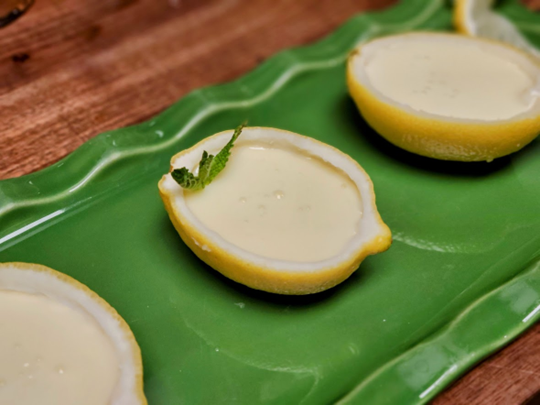 I had never heard of this dessert before. So, what is lemon posset (pronounced paa·suht)? It originates from Great Britain and goes back a few hundred years as it started as a warm drink. Milk was curdled with ale, cider or sherry and was said to have restorative properties. One fun fact that I learned was that possets were mentioned in Shakespeare’s plays! The posset drinks of old were much thinner than the modern version we know today. Back then, there were even special posset serving cups that had a small spout coming out the side.
I had never heard of this dessert before. So, what is lemon posset (pronounced paa·suht)? It originates from Great Britain and goes back a few hundred years as it started as a warm drink. Milk was curdled with ale, cider or sherry and was said to have restorative properties. One fun fact that I learned was that possets were mentioned in Shakespeare’s plays! The posset drinks of old were much thinner than the modern version we know today. Back then, there were even special posset serving cups that had a small spout coming out the side.
The more contemporary iteration of this dish has the texture of a soft panna cotta or a really light pudding much thicker than a drinkable liquid. Traditionally, custard is a mixture of eggs, dairy, sugar and another sort of thickener like cornstarch or flour. But this particular posset is only a whopping three simple ingredients! Lemon is one of my favorite ingredients; just check out my chef profile I filled out when I had just started at The Chopping Block eight years ago. It is one of those ingredients that is just so versatile I always have them in my kitchen, and I love using them in desserts.
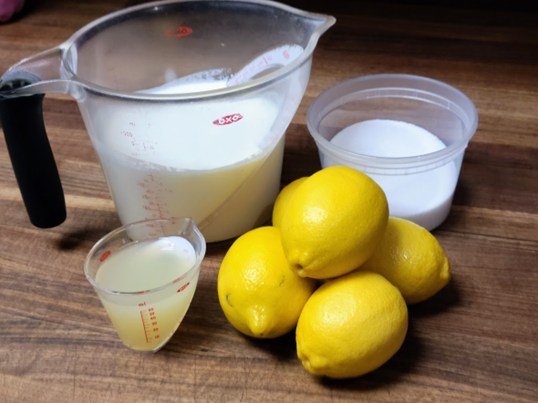 I can’t wait to blow your mind with how extremely straightforward yet incredibly delicious this dessert is!
I can’t wait to blow your mind with how extremely straightforward yet incredibly delicious this dessert is!
Lemon Posset
Scroll down for a printable version of this recipe
Yield: approximately 12 lemon shells or 6 coups/ramekins
Prep time:
Cook time: 10 minutes
Inactive time: 1-2 hours
600 ml heavy whipping cream
200 grams sugar
2 Tablespoons lemon zest, approximately 2 lemons
75 ml fresh squeezed lemon juice
1 teaspoon vanilla extract, optional
1. Place the cream, sugar, and lemon zest in a saucepan. Heat over medium high heat.
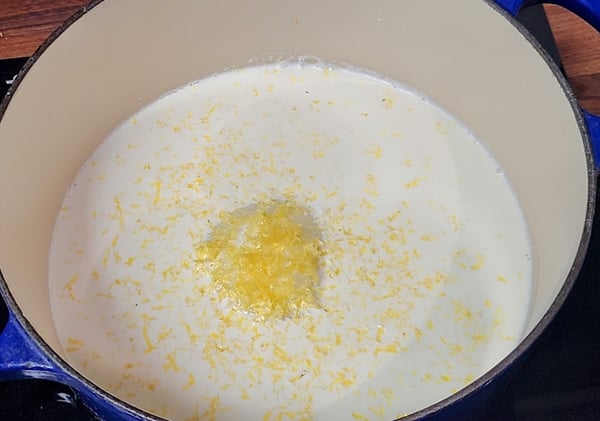 2. Stir in the sugar to be dissolved in the cream. When bubbles start to appear on top of the heavy cream, remove from the heat. Be careful not to boil.
2. Stir in the sugar to be dissolved in the cream. When bubbles start to appear on top of the heavy cream, remove from the heat. Be careful not to boil.
3. Whisk in the lemon juice.
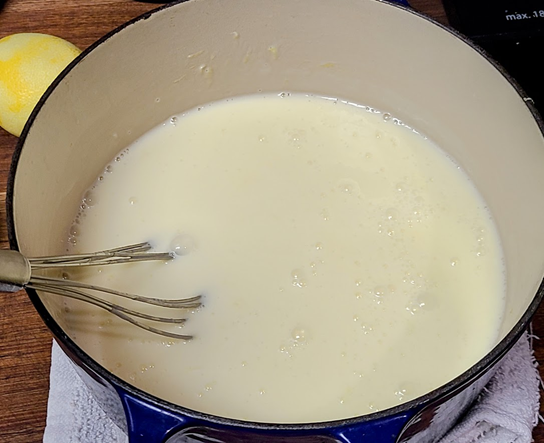 4. Let the mixture cool for 10 minutes, then strain into a liquid measuring cup for ease of pouring into the serving vessel.
4. Let the mixture cool for 10 minutes, then strain into a liquid measuring cup for ease of pouring into the serving vessel.
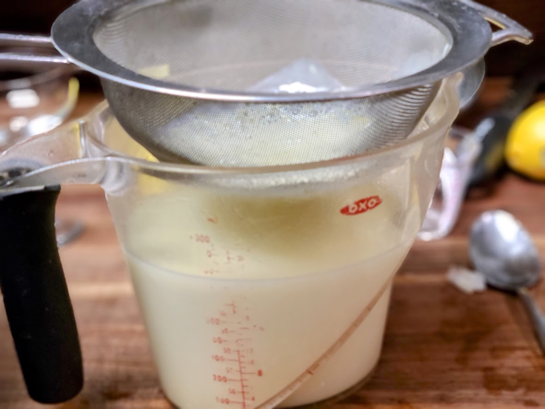 5. Hollow out and fill lemon halves if using as a vessel.
5. Hollow out and fill lemon halves if using as a vessel.
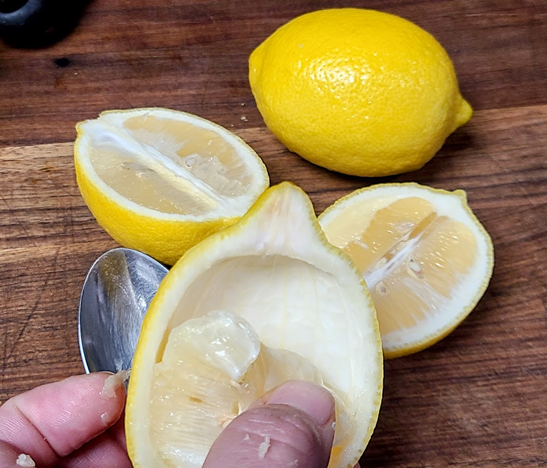 6. Cool completely at room temperature.
6. Cool completely at room temperature.
7. Refrigerate for at least 1 hour or for up to 3 days.
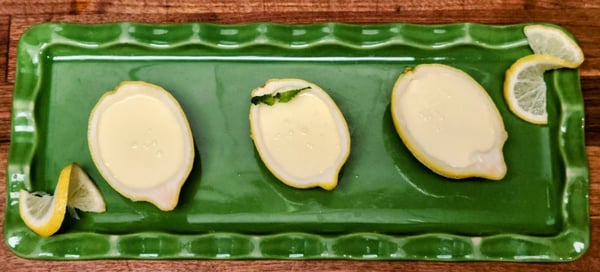 You can set this custard in any vessel you wish and depending on how much you fill them this mix can go a long way. These would be great garnished with a dollop of whipped cream or topped with macerated berries.
You can set this custard in any vessel you wish and depending on how much you fill them this mix can go a long way. These would be great garnished with a dollop of whipped cream or topped with macerated berries.
 I took this classic dessert a step further and coated the top with sugar and then torched it to create a beautifully bruleed top.
I took this classic dessert a step further and coated the top with sugar and then torched it to create a beautifully bruleed top.
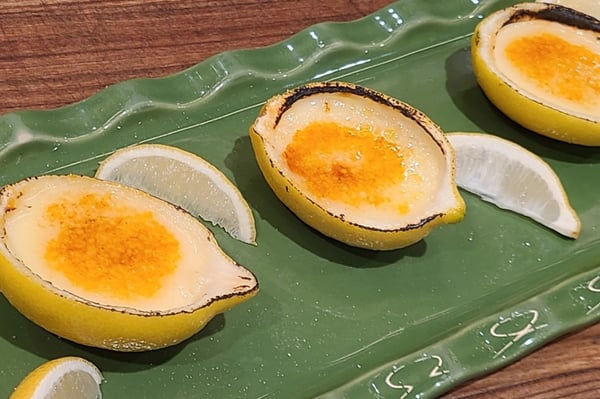 I think that if I were to make this again, I would blanch the lemon rinds and candy them after the insides were scooped out. That way you could eat the whole thing instead of just throwing the rind away after eating the posset. This would also offset the bitterness that the rind has.
I think that if I were to make this again, I would blanch the lemon rinds and candy them after the insides were scooped out. That way you could eat the whole thing instead of just throwing the rind away after eating the posset. This would also offset the bitterness that the rind has.
This posset is the perfect end to any meal or can really act as a palate cleanser between courses. It is refreshing and light for a summertime treat any time of day. If you are interested in other simple yet delectable recipes check out our Taste of the Mediterranean: Seasonal Gluten-Free Cooking class coming up this Friday, September 8 at 6pm at Lincoln Square or any of our classes on the calendar. There are just two spots left! We make cooking approachable and fun for the home cook.
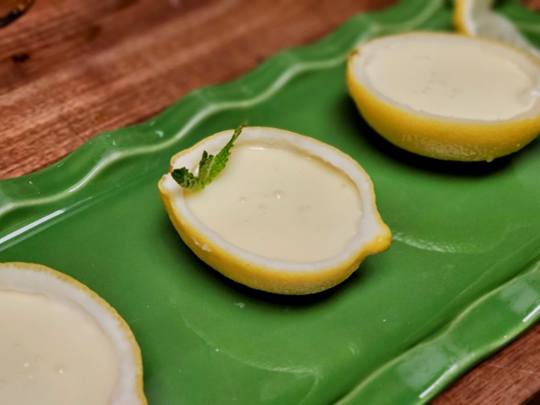
Lemon Posset
Ingredients
- 600 ml heavy whipping cream
- 200 grams sugar
- 2 Tablespoons lemon zest, approximately 2 lemons
- 75 ml fresh squeezed lemon juice
- 1 teaspoon vanilla extract, optional
Instructions
- Place the cream, sugar, and lemon zest in a saucepan. Heat over medium high heat.
- Stir in the sugar to be dissolved in the cream. When bubbles start to appear on top of the heavy cream, remove from the heat. Be careful not to boil.
- Whisk in the lemon juice.
- Let the mixture cool for 10 minutes, then strain into a liquid measuring cup for ease of pouring into the serving vessel.
- Hollow out and fill lemon halves if using as a vessel.
- Cool completely at room temperature.
- Refrigerate for at least 1 hour or for up to 3 days.











